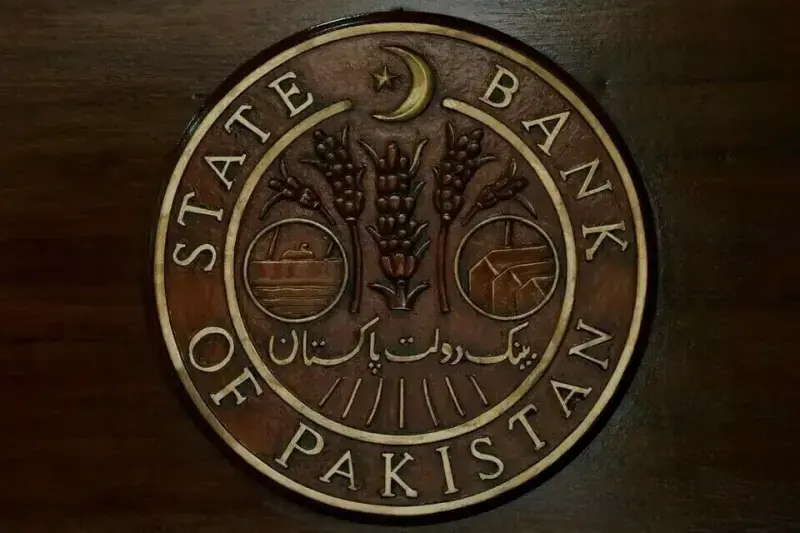The Monetary Policy Committee (MPC) of the State Bank of Pakistan (SBP), in line with market expectations, has decided to keep the policy rate unchanged at 11% on Monday.
“The MPC decided to keep the policy rate unchanged at 11% in its meeting today,” read the statement.
The MPC noted that headline inflation rose significantly to 5.6% in September, whereas core inflation remained unchanged at 7.3%.
“The MPC assessed that the impact of the recent floods on the broader economy appears to be somewhat lower than anticipated at the time of its previous meeting. The crop losses are likely to be contained, whereas supply disruptions turned out to be minimal.
“Moreover, economic activity gained further momentum, as depicted by robust growth in high-frequency economic indicators. Based on these developments, the overall macroeconomic outlook has improved from the previous assessment.
“At the same time, the committee noted uncertainties around this outlook arising from volatile global commodity prices; challenging export prospects amidst the evolving tariff dynamics; and potential domestic food supply frictions.
The committee noted some key developments since its last meeting.
“First, real GDP growth in FY25 was revised by PBS to 3% from the previous estimate of 2.7%.
“Second, initial estimates of major Kharif crops by the Federal Committee on Agriculture remained close to last year’s production, despite the recent floods.
“Third, despite the repayment of a $500 million Eurobond, SBP’s FX reserves continued to increase.
“Fourth, Pakistan reached a staff-level agreement with the IMF [International Monetary Fund] on the EFF [Extended Fund Facility] and the RSF [Resilience and Sustainability Facility] reviews.
“Fifth, inflation expectations of both consumers and businesses eased in the latest SBP-IBA sentiment surveys.
“Lastly, global commodity price movements depicted mixed trends, with oil prices displaying heightened volatility.
The MPC was of the view that the real policy rate remains adequately positive to stabilise inflation within the target range of 5 – 7% over the medium term.
Inflation outlook
The MPC highlighted that the headline inflation rose significantly to 5.6% in September from 3% in August.
“This largely reflected the expected flood-induced increase in food prices; an uptick in energy prices, and sticky core inflation.
“The MPC observed that, unlike previous flood episodes, the recent surge in food prices appears to be milder than anticipated earlier. This is reflected by the recent slowdown in price increases of major food items in high-frequency SPI data, such as wheat and allied products, sugar, and perishable items.
“Nonetheless, the committee expects inflation to exceed the upper bound of the target range for a few months in H2-FY26, before reverting to the target range in FY27,” read the statement.
Previous meeting
At its previous meeting on September 15, 2025, the MPC decided to keep the policy rate unchanged at 11%, citing the adverse impact of recent floods on the near-term macroeconomic outlook.
Market experts had widely expected the central bank to maintain the status quo in today’s meeting.
Arif Habib Limited (AHL) anticipated no change in the policy rate, “mainly due to the recent rise in inflation, a marginal widening current account deficit, and the early stage of domestic recovery”.
AHL noted that economic momentum is slowly gaining pace, with large-scale manufacturing growing by 9% YoY in July. However, while a rate cut could further support this recovery, the SBP may prefer to defer any easing for now, “allowing stability itself to nurture the ongoing momentum in the real sector”.
Analysts at Topline Securities echoed similar views, citing a higher inflation pattern emanating from recent floods and rising import levels.
“We expect the central bank to maintain the status quo on the interest rate front in FY26, as during 2HFY26, the inflation numbers in the last few months (Apr, May and Jun) might cross 8- 9% before reverting to the normalised range of 6-7%.
“Furthermore, non-oil import numbers are also on a rising trajectory despite higher interest rates of 11% and real rate of over 500- 600bps. This signals SBP might continue with a status quo approach,” Topline said.
Similarly, a Reuters poll also found that the central bank would keep its key interest rate unchanged, as analysts said flood-driven food inflation and a low base effect are likely to limit the scope for further monetary easing.
“An elevated inflation reading in September, incorporating the impact of the recent floods, is likely to incline the MPC to keep the policy rate at the same level,” said Fawad Basir, head of research at KTrade, adding that the next cut was likely in the last quarter of FY26, starting July 2026.
Earlier, Governor SBP Jameel Ahmad, in an interview with Bloomberg, said that the economic fallout from recent floods would determine future policy rate cuts.
Previous MPC meeting
In its September meeting, the MPC kept the policy rate unchanged at 11%. The decision was also in line with market expectations.
The committee, at that time, noted that inflation remained relatively moderate in both July and August, whereas core inflation continued to decline at a slower pace.
Since the last MPC meeting, several key economic developments have occurred.
The rupee has appreciated by 0.2%, while petrol prices have declined by 0.6%.
Internationally, oil prices have reduced by nearly 2% since the last MPC, hovering around $62 per barrel.
Pakistan’s headline inflation clocked in at 5.6% on a year-on-year (YoY) basis in September 2025, according to the Pakistan Bureau of Statistics (PBS) data.
In addition, Pakistan’s current account (C/A) posted a significant surplus of $110 million in September, a sharp contrast against $52 million deficit recorded in the same month last fiscal, data released by the SBP showed.
Foreign exchange reserves held by the central bank rose by $14 million on a weekly basis, reaching $14.45 billion as of October 17, 2025.
According to the central bank, total liquid foreign reserves stood at $19.85 billion, while net foreign reserves held by commercial banks were recorded at $5.40 billion.


